Abstract
Higher rates of pecking were maintained by pigeons in the middle component of three-component chained fixed-interval schedules than in that component of corresponding multiple schedules (two extinction components followed by a fixed-interval component). This rate difference did not occur in equivalent tandem and mixed schedules, in which a single stimulus was correlated with the three components. The higher rates in components of chained schedules demonstrate a reinforcing effect of the stimulus correlated with the next component; the acquired functions of this stimulus make the vocabulary of conditioned reinforcement appropriate. Problems in defining conditioned reinforcement arise not from difficulties in demonstrating reinforcing effects but from disagreements about which experimental operations allow such reinforcing effects to be called conditioned.
Keywords: chained schedule, tandem schedule, multiple schedule, mixed schedule, fixed-interval schedule, conditioned reinforcement, contingency, key peck, pigeons
Full text
PDF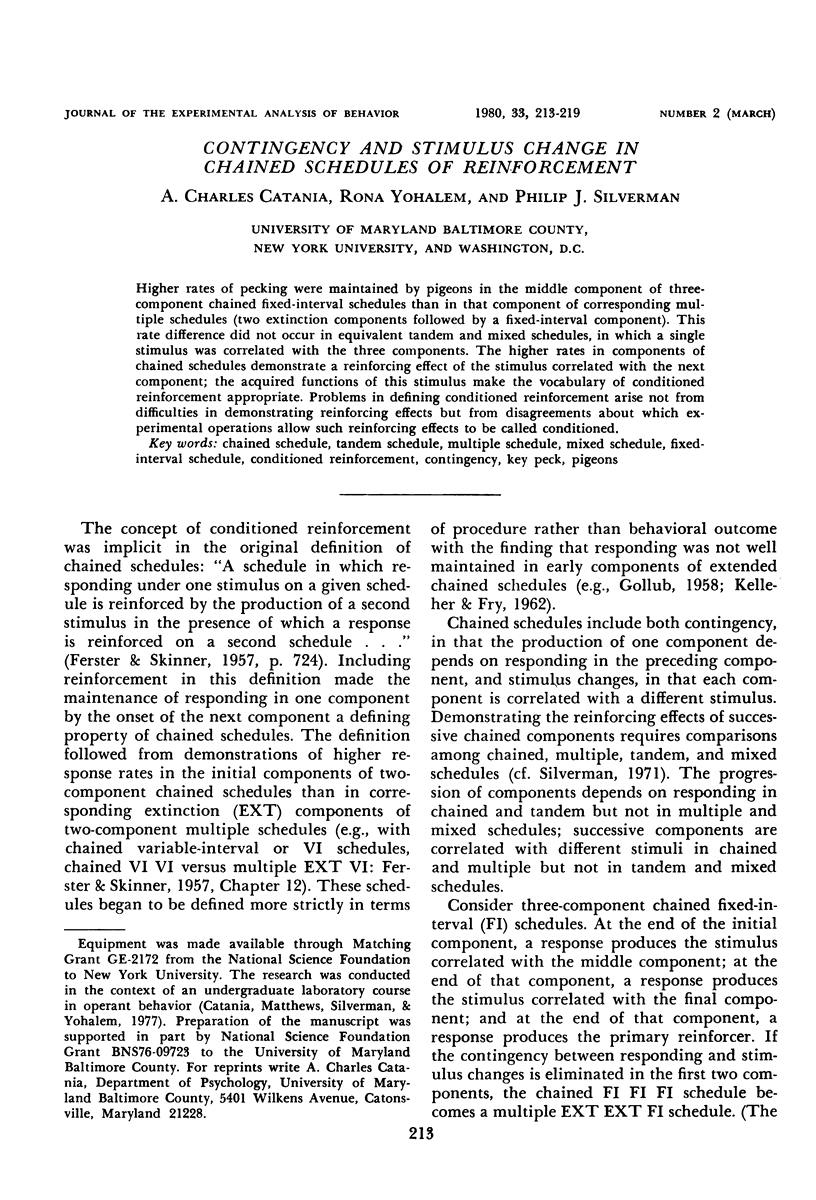
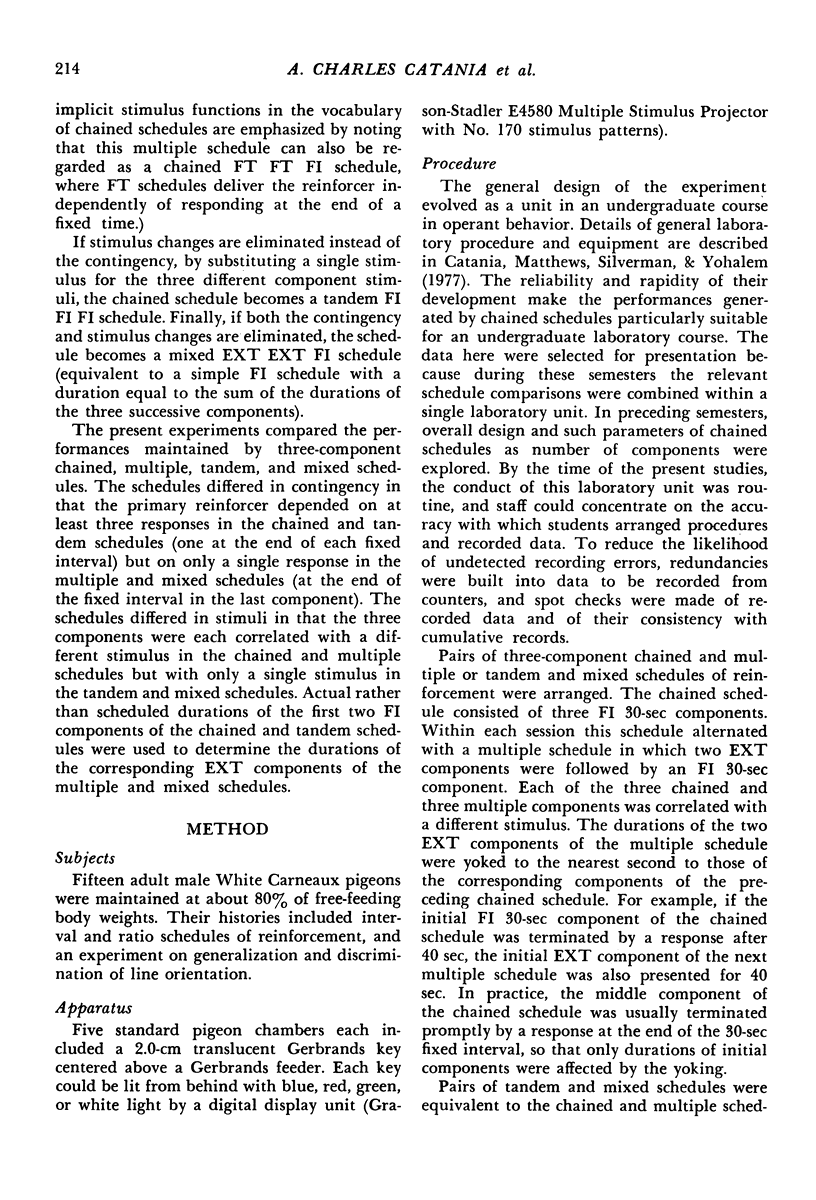
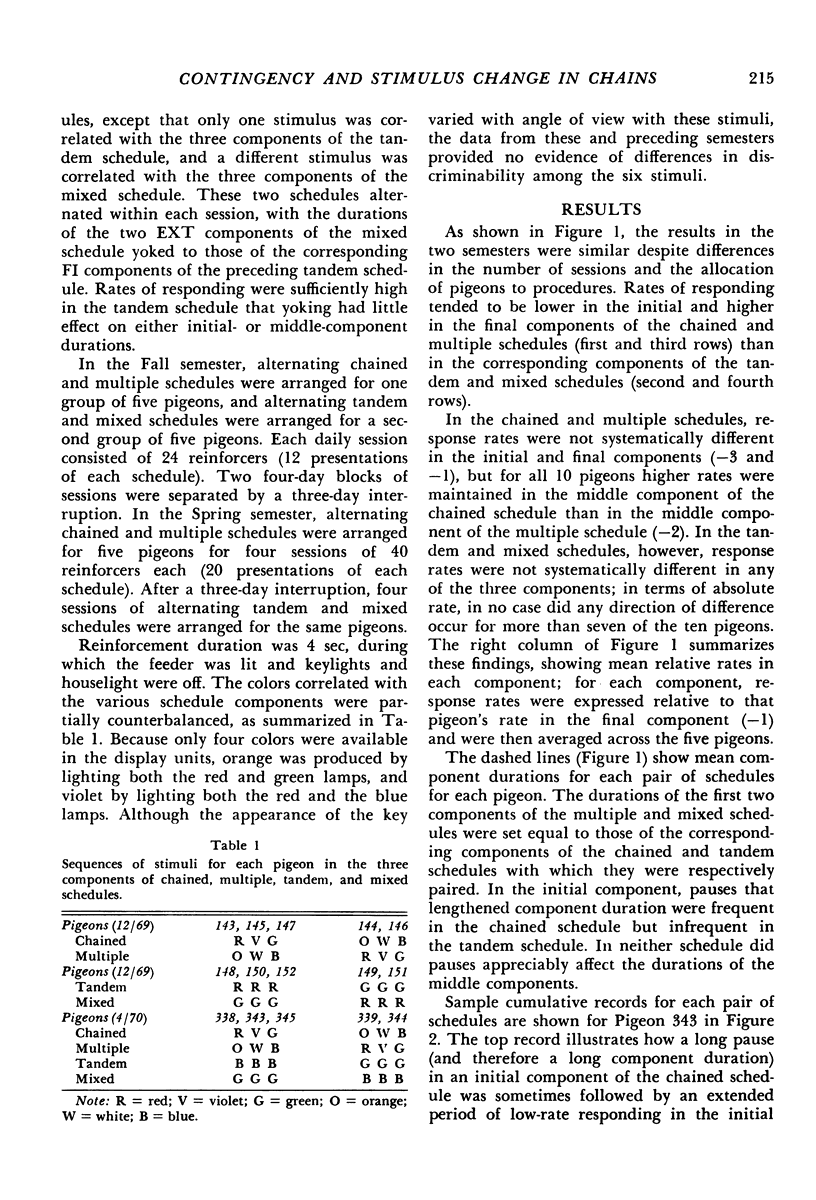
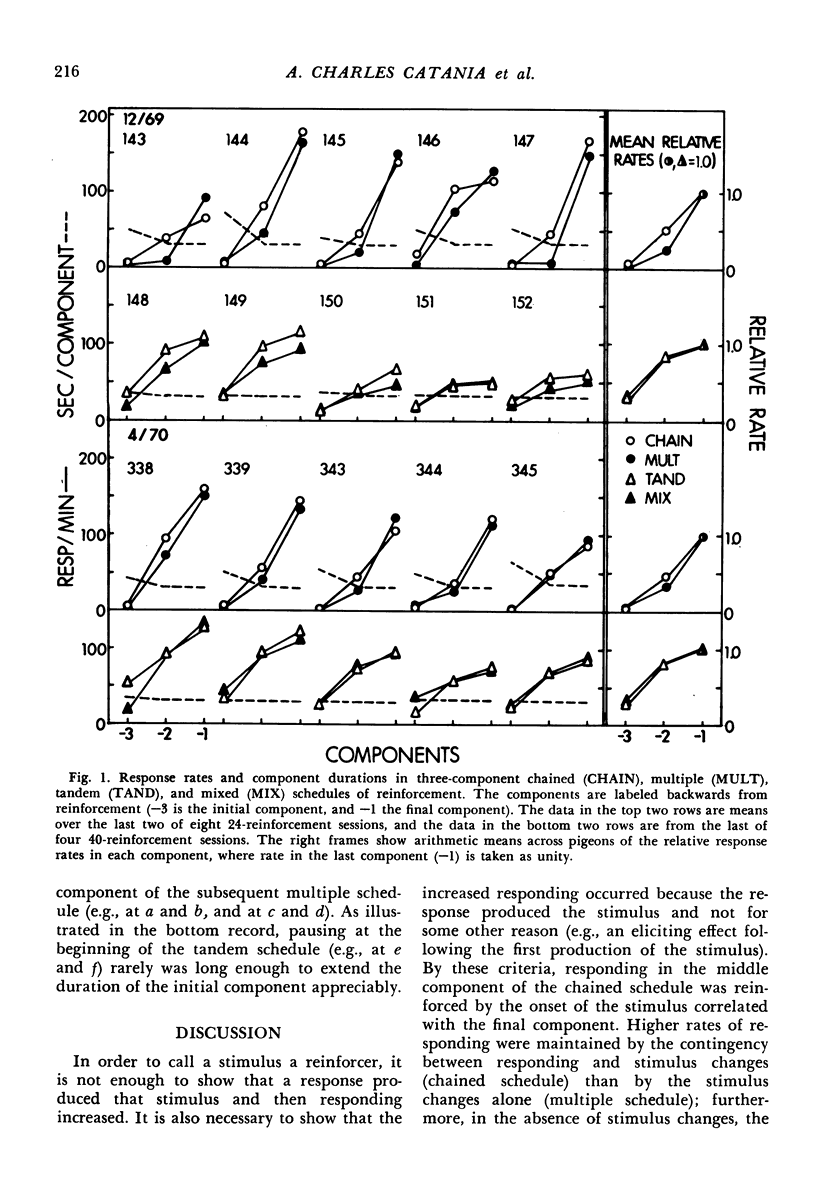
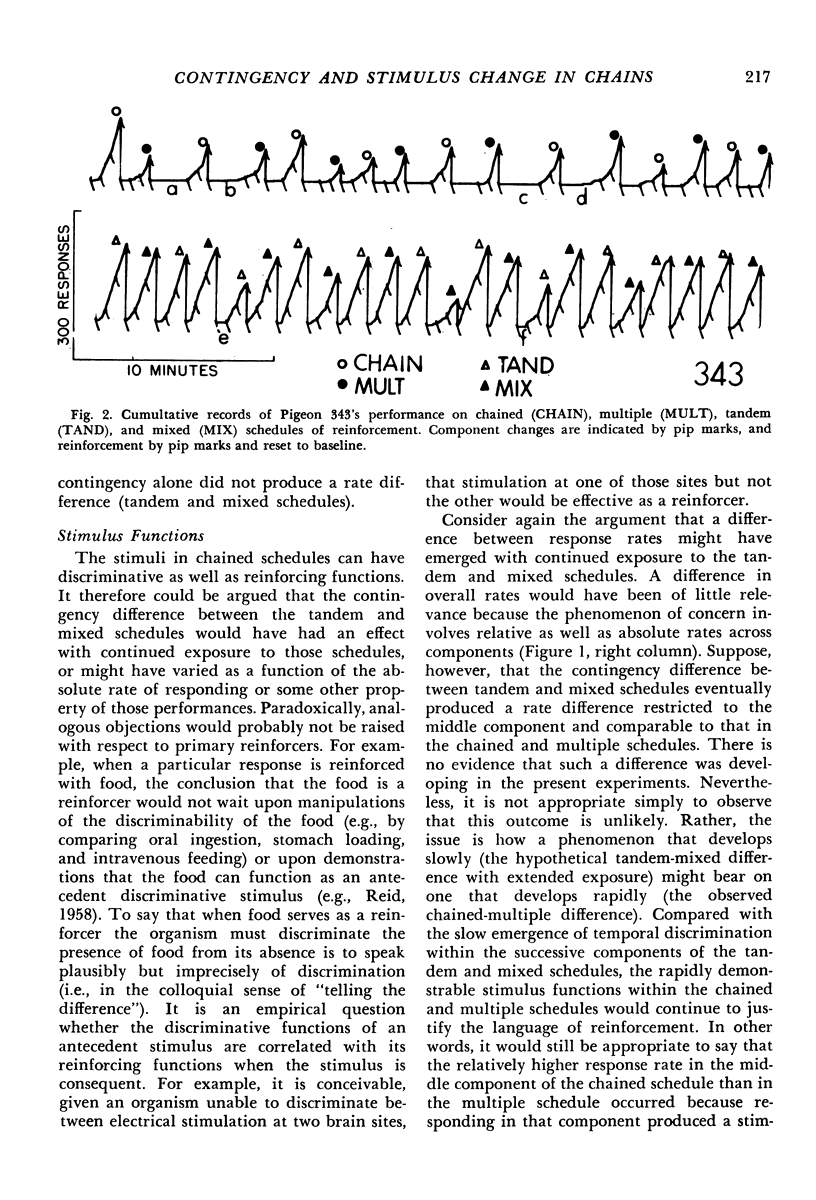
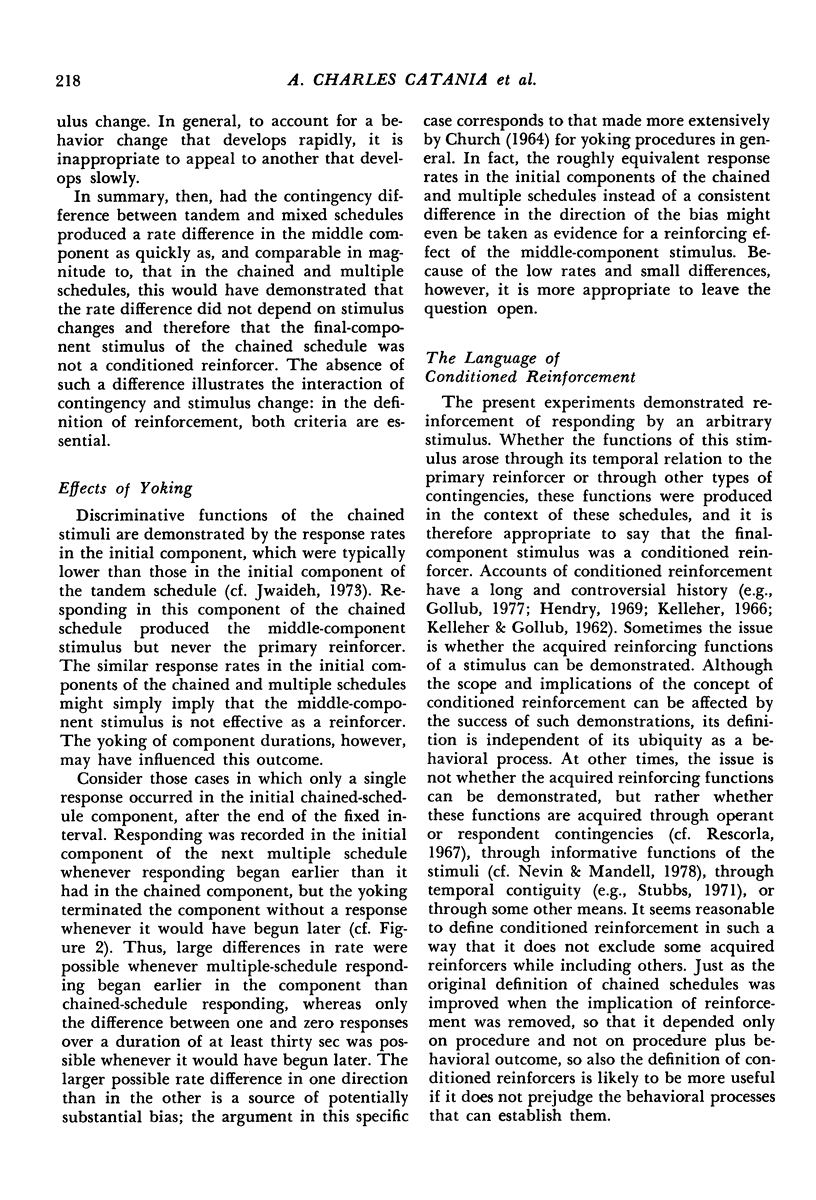
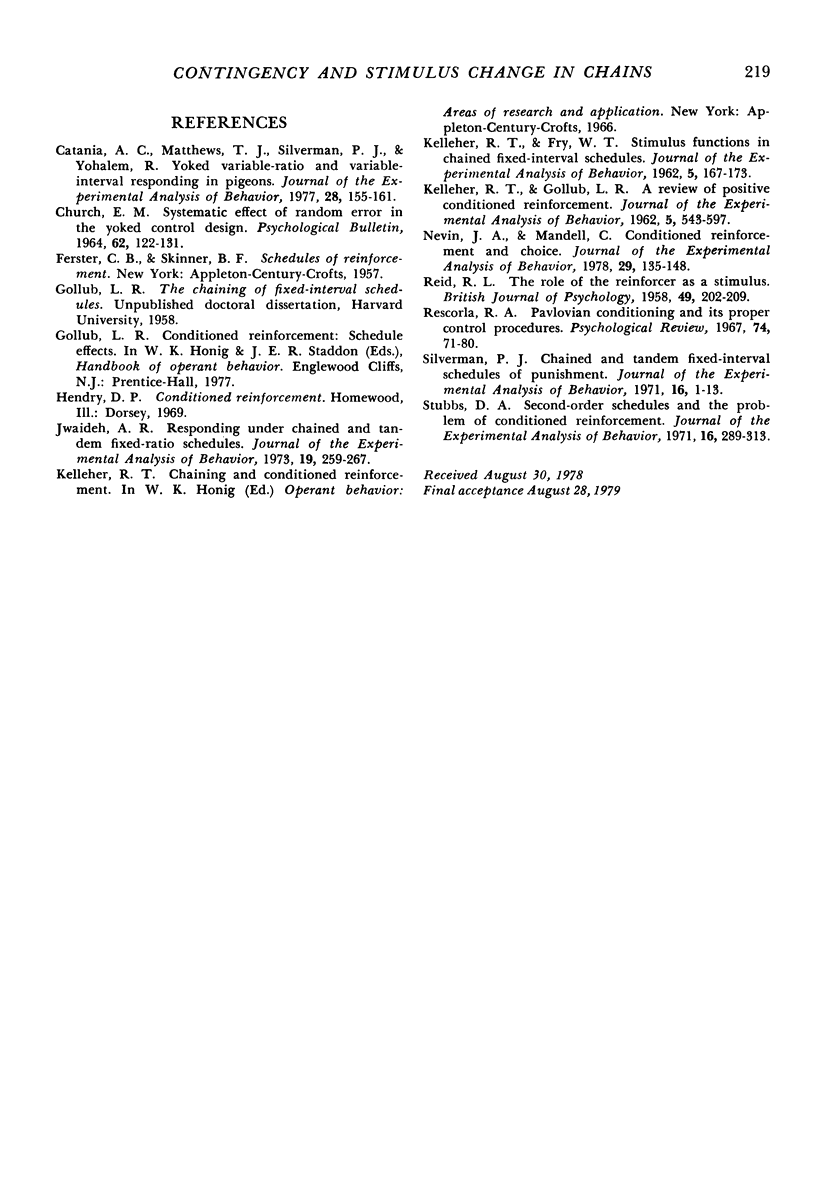
Selected References
These references are in PubMed. This may not be the complete list of references from this article.
- CHURCH R. M. SYSTEMATIC EFFECT OF RANDOM ERROR IN THE YOKED CONTROL DESIGN. Psychol Bull. 1964 Aug;62:122–131. doi: 10.1037/h0042733. [DOI] [PubMed] [Google Scholar]
- Catania A. C., Matthews T. J., Silverman P. J., Yohalem R. Yoked variable-ratio and variable-interval responding in pigeons. J Exp Anal Behav. 1977 Sep;28(2):155–161. doi: 10.1901/jeab.1977.28-155. [DOI] [PMC free article] [PubMed] [Google Scholar]
- Jwaideh A. R. Responding under chained and tandem fixed-ratio schedules. J Exp Anal Behav. 1973 Mar;19(2):259–267. doi: 10.1901/jeab.1973.19-259. [DOI] [PMC free article] [PubMed] [Google Scholar]
- KELLEHER R. T., FRY W. T. Stimulus functions in chained fixed-interval schedules. J Exp Anal Behav. 1962 Apr;5:167–173. doi: 10.1901/jeab.1962.5-167. [DOI] [PMC free article] [PubMed] [Google Scholar]
- KELLEHER R. T., GOLLUB L. R. A review of positive conditioned reinforcement. J Exp Anal Behav. 1962 Oct;5:543–597. doi: 10.1901/jeab.1962.5-s543. [DOI] [PMC free article] [PubMed] [Google Scholar]
- Nevin J. A., Mandell C. Conditioned reinforcement and choice. J Exp Anal Behav. 1978 Jan;29(1):135–148. doi: 10.1901/jeab.1978.29-135. [DOI] [PMC free article] [PubMed] [Google Scholar]
- REID R. L. The role of the reinforcer as a stimulus. Br J Psychol. 1958 Aug;49(3):202–209. doi: 10.1111/j.2044-8295.1958.tb00658.x. [DOI] [PubMed] [Google Scholar]
- Rescorla R. A. Pavlovian conditioning and its proper control procedures. Psychol Rev. 1967 Jan;74(1):71–80. doi: 10.1037/h0024109. [DOI] [PubMed] [Google Scholar]
- Silverman P. J. Chained and tandem fixed-interval schedules of punishment. J Exp Anal Behav. 1971 Jul;16(1):1–13. doi: 10.1901/jeab.1971.16-1. [DOI] [PMC free article] [PubMed] [Google Scholar]
- Stubbs D. A. Second-order schedules and the problem of conditioned reinforcement. J Exp Anal Behav. 1971 Nov;16(3):289–313. doi: 10.1901/jeab.1971.16-289. [DOI] [PMC free article] [PubMed] [Google Scholar]


